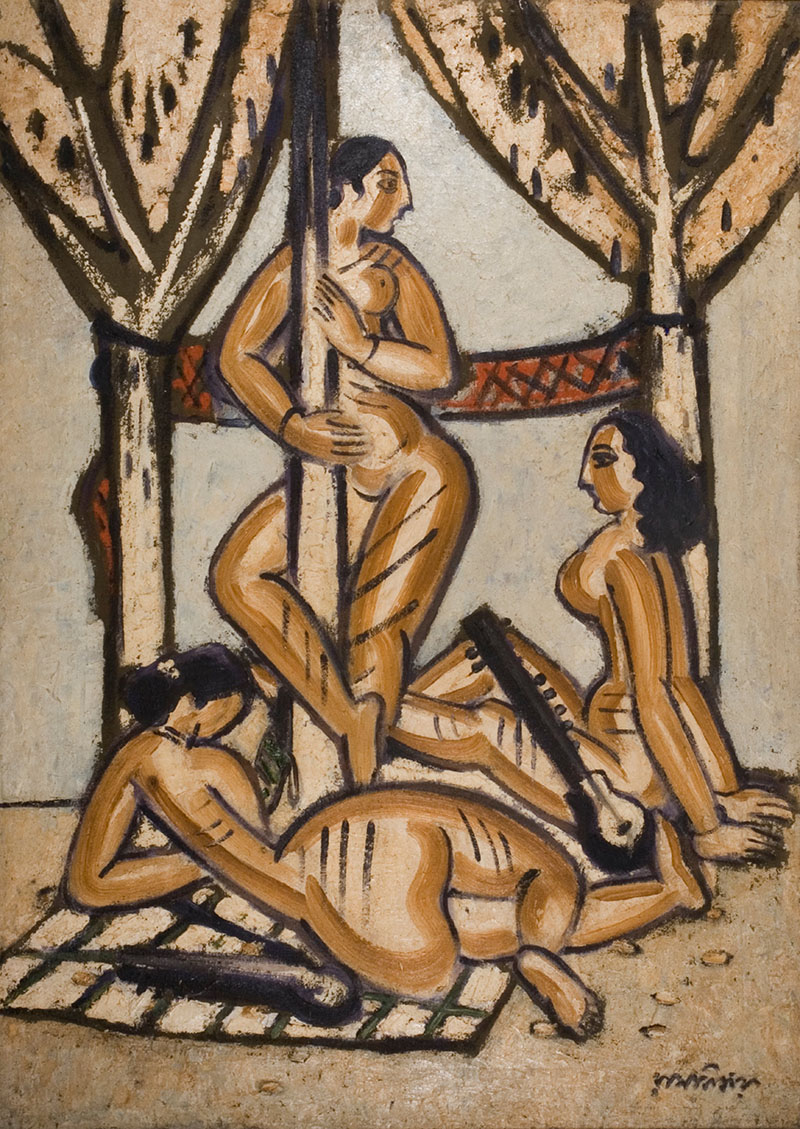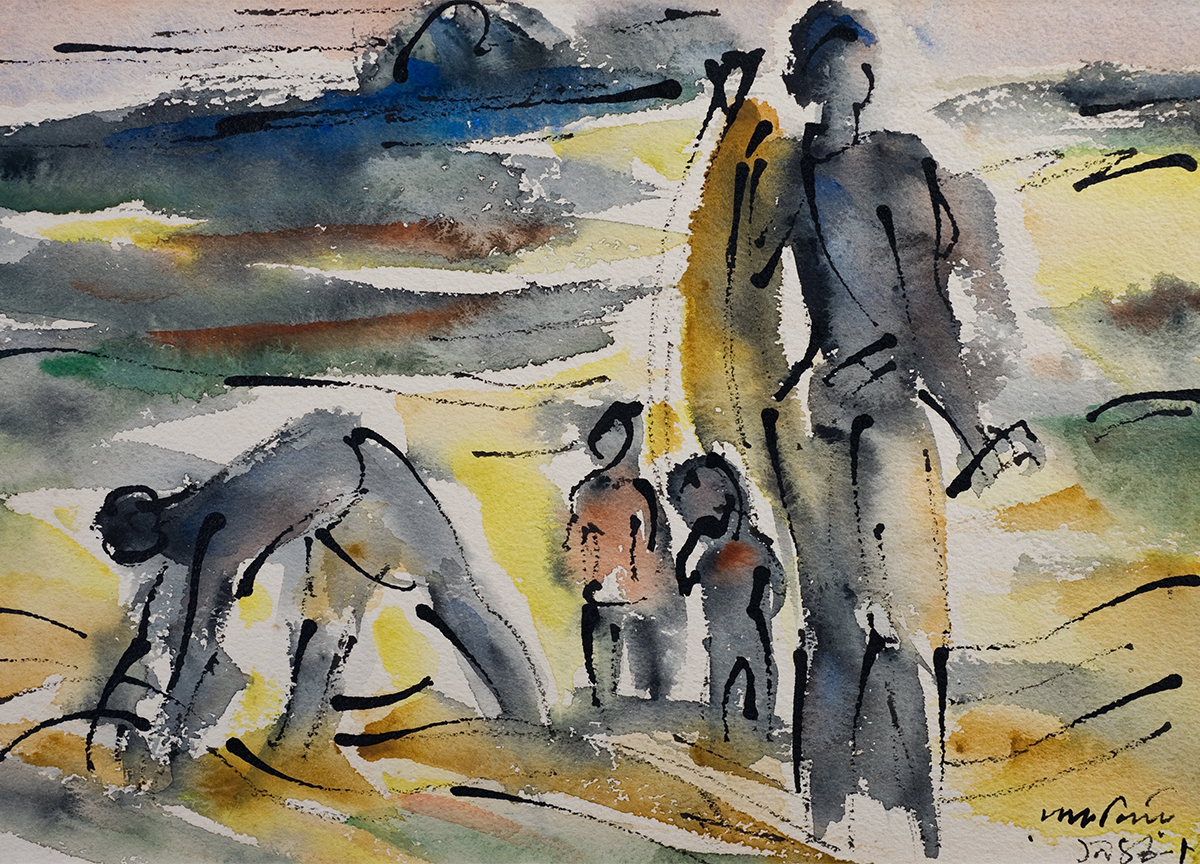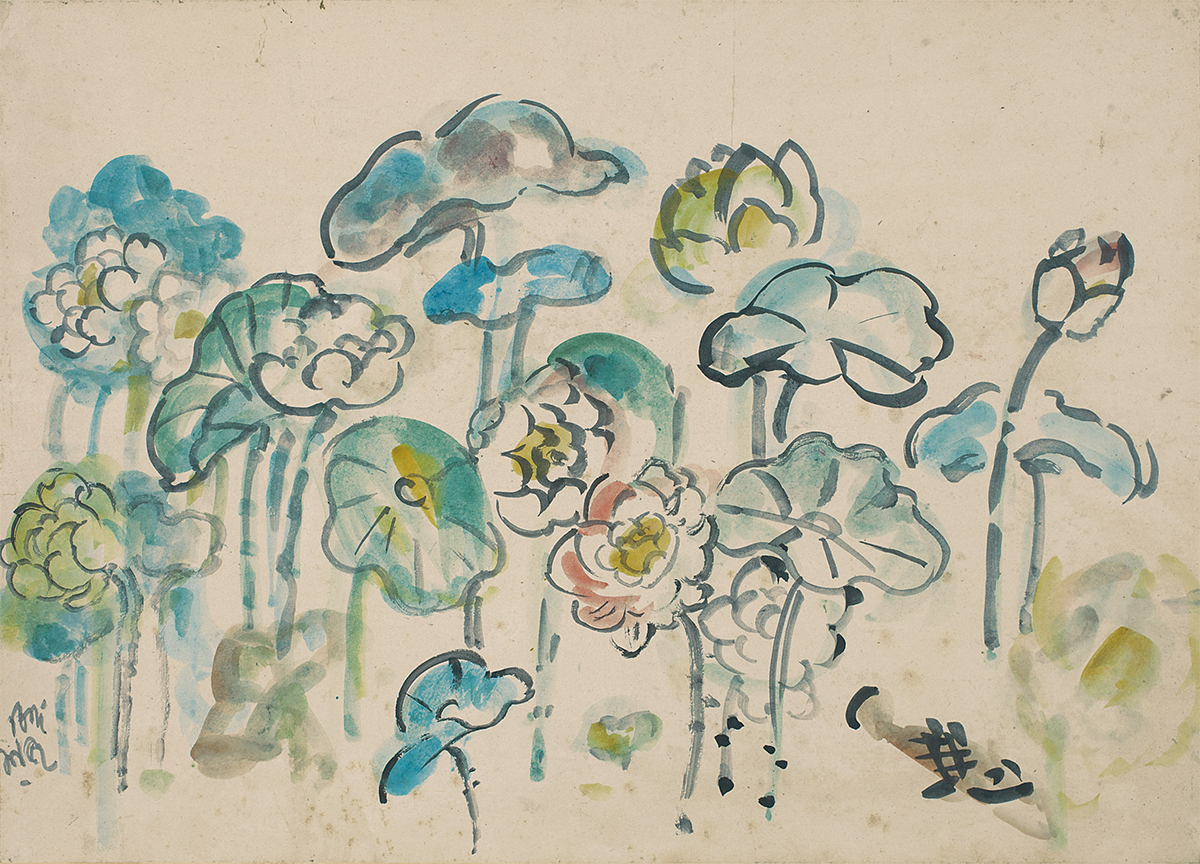Developing from the Bengal School in the early twentieth century, Contextual Modernism was an independent artistic movement that advocated for a humanism and cross-culturalism in art along with the incorporation of local elements. Instituted by Rabindranath Tagore, the movement represented a shift from the rigidity and insularity of the Revivalist movement of the Bengal School, instead favouring a community thriving on experimentation, moving closer to art that responded more widely to contemporary life, nature and Modernist philosophies.
The movement can be traced to the curriculum and overall ethos of Shantiniketan, which emphasised individual artistic freedom as well as a non-hierarchical exchange between cultural philosophies and artforms while honouring local communities and the natural world, resulting in a modernist cross-pollination that could lead to innovative transformations within art. This was reflected in the teachings and artworks of its notable artists, Rabindranath Tagore, Nandalal Bose, Benode Behari Mukherjee and Ramkinker Baij. Bose specifically assisted with the creation of Shantiniketan’s pedagogical structure.
There is a notable distinction between Shantiniketan as an institution and Shantiniketan as the site of an art movement. Whereas the former engaged with wider geographic and thematic boundaries of style and thought that extended beyond Contextual Modernism, the latter was specifically moulded by Tagore, Bose, Baij and Mukherjee. However, their artistic careers did not share stylistic features and often crossed over into other discourses: Tagore showed a preference for humanist ideals with a focus on rural Bengal, producing work that intermittently focused on natural elements depicted in a dreamlike manner and charged with humour. Bose did not categorise his style or subject matter, but emphasised both Revivalist characteristics and local life. The artists continued to employ the miniature painting style, although with a shift in the subject matter to focus on femininity and everyday life. Baij then is recognised for his depictions of child and mother in sculpture and painting, whereas Mukherjee represented the Contextual Modernist aesthetic by rejecting obvious mythological symbols in exchange for the realism of German Expressionism in his depictions of everyday life.










